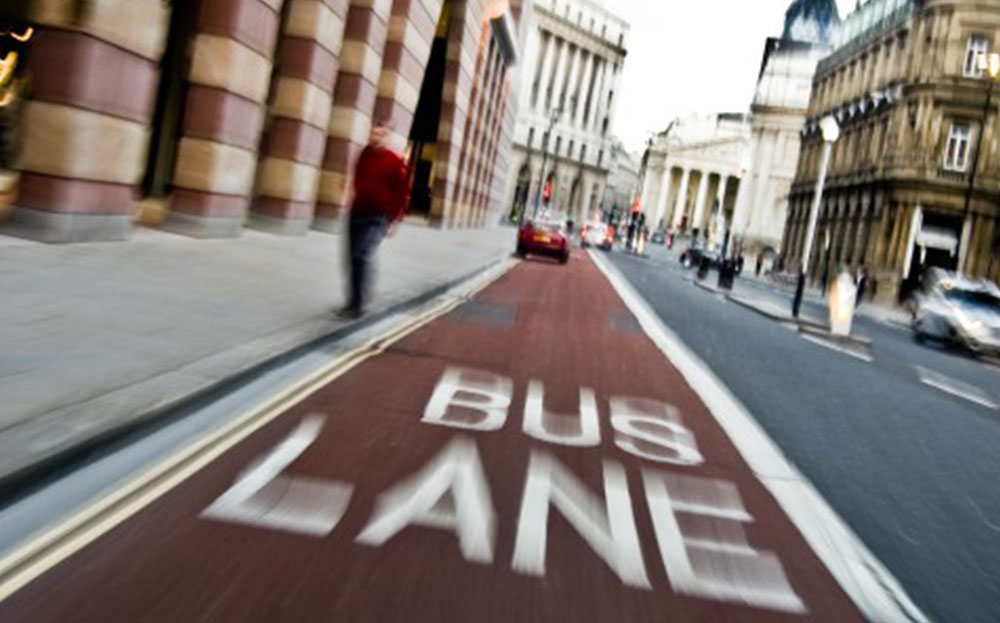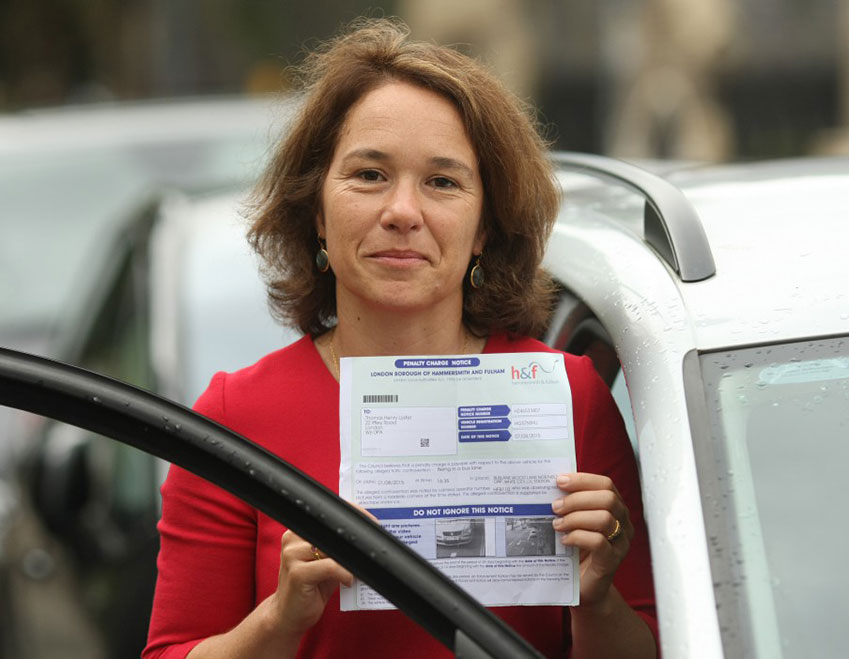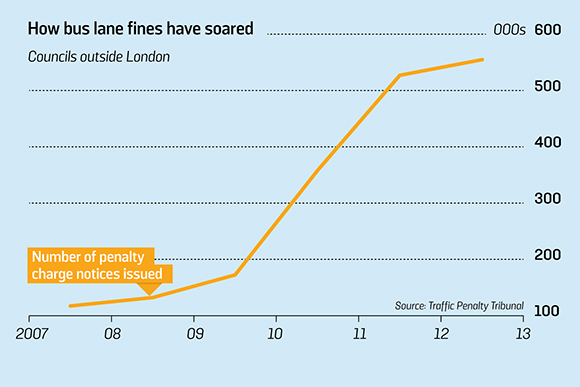Busted: the bus-lane cameras that snare thousands of motorists a day
One false move into the bus lane — that’s £130, please, madam

I AM the Hermione Granger of British roads. That is to say that I am at the school swot end of the driving spectrum. I passed my test first time and have never received a speeding ticket, been clamped, been towed away or crashed my car.
Click to read car REVIEWS or search NEW or USED cars for sale on driving.co.uk
But last month all that changed: I broke the rules and a camera — serial number HFB 110 — was there to witness my transgression.
Before I describe what happened, I would like to emphasise that I am not claiming I was innocent. The camera captured an image of my offence — showing me clearly driving in a bus lane — and it was sent to me with a £130 penalty charge notice.
Now, I am a keen user of London’s buses and use them to take my three children to school every morning. I hate it when anybody delays our journey by parking or driving in the bus lane. But the closer I looked at the photo and the more I replayed the incident in my mind, the angrier I became.
The image shows my VW Touran in Wood Lane, near Westfield shopping centre in west London. Cars drive in the outside lane. The bus lane on the inside is clearly marked and, naturally, everybody avoids it. However, to turn left into South Africa Road, which I needed to do, you have to get into the inside lane, which is what I did.
Fellow drivers are increasingly finding that brown envelope dropping onto the doormat. It is becoming almost as common as being hit with a speeding penalty for going fractionally over the limit
The grainy photograph shows my car in the inside lane preparing to turn left. But crucially the vehicle is positioned approximately a car’s length before the arrow painted on the road that signals the end of the bus lane. Technically — and although there was nothing behind me or in front of me — I was in the bus lane and therefore bang to rights.
But was it a transgression that merits a £130 penalty charge (£65 if you pay within two weeks)? After all, shoplifters receive a penalty of only £60-£90 for low-value offences. Or was this an overzealous interpretation of the rules?
I am not alone in beginning to ask this question. Fellow drivers are increasingly finding that brown envelope dropping onto the doormat. In fact, it is becoming almost as common for city dwellers to be hit with a bus lane fine as with a speeding penalty for going fractionally over the limit.
A decade ago, bus lane fines were almost unheard of. Enforcement was usually carried out by the police, which meant that only the most blatant transgressors would be prosecuted. That all changed with the introduction of the Traffic Management Act 2004, which allowed councils outside London to take over responsibility. The capital already had that power.

The fines started flowing in slowly: Reading in Berkshire was the first council to take advantage of the new law, in 2006. By the end of that year, the council had issued 9,838 tickets. A year later, eight other councils were issuing bus lane tickets but still the fines were a fraction of what councils were making from parking tickets: between April 2007 and March 2008, 117,265 drivers were fined across the whole of the UK.
The trickle has turned into a flood. Hammersmith and Fulham, the London borough where I was caught, issued 2,108 bus lane fines in 2008-09. Five years later in 2013-14 — the most recent year for which figures are available — the number had shot up to 11,503. If every driver pays the full £130, that’s almost £1.5m — impressive or worrying, depending on your point of view.
In 2010-11, according to the Traffic Penalty Tribunal, an independent body that administers appeals against parking and bus lane fines, 357,799 drivers were fined for bus lane transgressions outside London (inside the capital a further 213,592 fines were issued). A year later the figure was 527,027, with an additional 233,201 in London. In 2012-13, the latest year for which figures are available, councils outside London issued a record 554,773 bus lane fines. In London the figure was 242,541.
Assuming that the drivers paid the full fine of up to £70— the going rate outside the capital — and £130 in London, councils raked in an estimated £70m that year. Crucially, unlike speeding fines, which go directly to the Treasury, bus lane fines and parking ticket revenue are kept by the council, proving a lucrative revenue stream. Councils argue that the money is ring-fenced for transport and roads, although they admit the extra cash frees up funding for non-road projects.
The figures for 2013-14 are due to be published shortly and are expected to show a further rise. Information released already shows councils have rapidly increased the rate at which they issue bus lane tickets. Leeds city council sent out 51,622 bus lane tickets in 2013-14, up 14% annually. In Bristol, where new cameras were introduced, 60,736 drivers were penalised for driving in a bus lane, compared with 25,000 the previous year. Drivers in Glasgow have been hit with fines totalling nearly £3m from one bus lane enforcement camera since it was installed last year.
Today, almost every large city has a network of bus lanes bristling with cameras targeting motorists and issuing fines for even minor offences.

The growth of bus lane fines has worrying parallels. A decade ago councils were accused of using overzealous parking enforcement to raise revenue. Many started using “spy cars” for enforcement, a practice that the government banned last year, claiming drivers were being targeted unfairly.
Some experts suspect councils may be shifting their resources away from parking and towards bus lane penalties. “Bus lane fines are the new parking fines,” said one source, who did not wish to be named.
So was my ticket unfair? I went back to the scene of my crime last week to retrace my steps and to check I had not missed anything.
It’s all very confusing if your eyes are on the road and not on a small blue sign — and the camera is hidden behind an overgrown tree
This particular bus lane is unusual in that it is the same colour as the rest of the road. And the thick white line separating buses from other traffic stops just before the arrows indicate that motorists may merge left. It’s all very confusing if your eyes are on the road and not on a small blue sign on a roadside pole that says “end of bus lane”. The camera, incidentally, is hidden behind an overgrown tree.
As I waited at the road, I spotted three cars execute the same manoeuvre as I had done and merge to the inside lane too early; the camera snapped and presumably a brown envelope is on its way to them, too.
It’s almost as if the authorities had deliberately placed the camera in that spot, and made the markings hard to decipher. But that would suggest the council was more interested in making money from motorists than playing fair. And that can’t be right, can it?
Click to read car REVIEWS or search NEW or USED cars for sale on driving.co.uk




